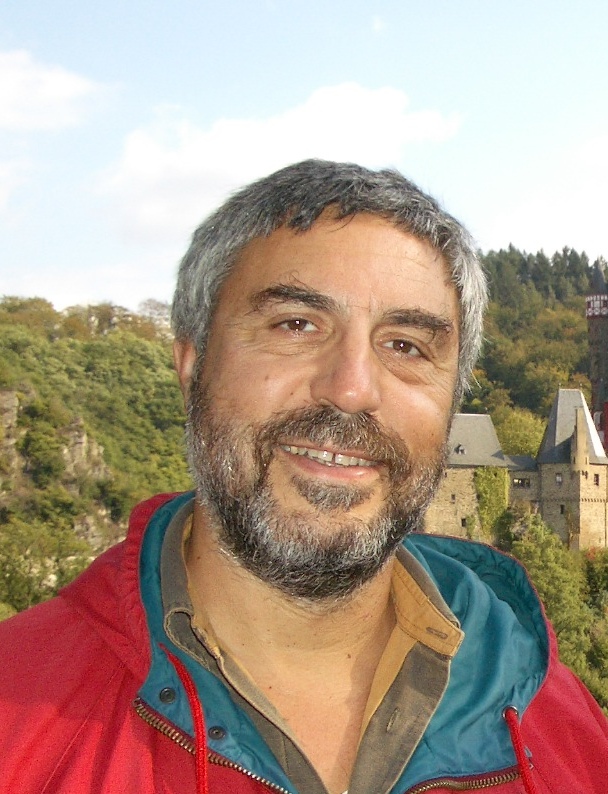14/5/08
Curriculum Vitae – Leonardo
Rossi

Born in Genoa 16/9/1950.
In 1973 I graduated in Physics,
under the supervision of G. Diambrini-Palazzi, with a thesis on design and
tests of drift chambers for the experiment WA7.
From 1973 to 1975 I followed the
Scuola di Perfezionamento in Fisica (now PhD) of the University of Genoa and studied
charm hadroproduction.
In 1973 I got a fellowship at Genoa
University to work at the CERN ISR where I took part in the experiment R602 (C.
Rubbia) that confirmed, with a method independent of the machine luminosity,
the rise of the total p-p cross-section with energy in the range 23.5
<√s<62.5 GeV/c2. Soon after the J/Y discovery, I contributed to experiment R605 (F. Muller) for
the measurement of electron production at medium pT. The result was
one of the first indications of the large charm cross section at ISR energies.
Soon after getting a permanent
position in INFN Genova (1975), I joined the WA7 experiment (A. Lundby) to
study large pT elastic scattering of p, pbar, K±, p± on proton at the new SPS accelerator at
CERN. My main responsibility was MWPC read-out and data taking and processing.
The most noticeable result of the experiment was the first observation of a dip
at four-momentum transfer of 1.5 (Gev/c)2 in p-pbar low-energy
elastic scattering.
I used my know-how on proportional
counters to design and build a low-activity multi-proportional counter for a
double-b decay experiment of 136Xe
(E. Fiorini) in the Gran Sasso laboratory and I took part in the calibration studies
and in the first measurements which improved the limit for neutrinoless double-b decay to 1022 years (at 95% CL).
In the early 80’s I moved back
again to heavy quark studies at the Omega spectrometer with a series of
experiments (WA71, WA82, WA89, WA92) lasting more than a decade. I took part in
all the experiment phases, from conception to construction to data taking and
analysis. I have been at the origin of the ideas of an impact parameter trigger
to collect a large sample of charmed particles in hadronic interactions (WA82)
and of the “silicon bubble chamber” to see beauty decays (WA92). I
have been spokesman of both experiments during their entire lifecycle (WA82:
1986-1990 and WA92: 1990-1995) and I contributed to clarify the leading charm
production measurements and the charm-anticharm correlations. Other
contributions to QCD were related to beauty cross-section measurements and
their correlations. I also contributed to the study of rare charm decays, in
particular D0àm+ m -.
During my activity at the Omega
spectrometer I was employed at CERN from 1982 to 1987, first as a Fellow then
as a Staff Research Physicist. I later spent two more sabbatical periods at
CERN as a Scientific Associate (in 1993-1994 and in 2005-2007).
I have also contributed to two other
lines of research active at the W spectrometer during my stay at CERN: gluonium searches (WA76,
WA94 with B. French) and the hunt for quark-gluon plasma through hyperon
enrichment in heavy-ion collisions (WA85, WA97 with E. Quercigh).
To measure tracks in heavy-ion
collisions, the development of a truly 3D sensor was necessary. I then joined
the RD19 collaboration (E. Heijne) that developed pixel detectors for LHC
applications. Indeed the first pixel detector applications were in the Omega
heavy-ion experiments and contributed substantially to the physics results.
In 1993 I joined ATLAS and kept working
on pixel detectors. I was ATLAS Pixel Project Leader from 1996 to 2005 and I
have contributed to bring this project well into the construction phase. I have
been Inner Detector Project Leader since 2005 and I’m looking forward to
a successful completion and then operation of this complex detector.
I have been a research director in
INFN since 1998.
I am a referee for several
scientific journals (IEEE, NIM-A, PLB, PRL) and for the Italian Ministry of
University and Research; I have been INFN referee for the experiment Hera-B.
I am a member of the IAC of several
conferences and workshop series:
“Heavy Quark and Leptons at Fixed Target” from
the creation (1993) up to 2002,
“Pixel detectors” since 1996 and
“ATLAS Tracker Upgrade Workshops” since 2005.
I have been member of several
international scientific committees:
PSSC at CERN (1988à1990),
DRDC at CERN (1992à1994) and
BaBar Technical Review Board at SLAC(1994à1997)
Author (with T.Rohe, P.Fischer and
N.Wermes) of the book “Pixel Detectors: from Fundamentals to
Applications” (Springer, 2006).
Web page: http://www.ge.infn.it/~rossi/leoweb/